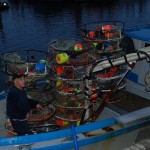By Monica Brown, Tulalip Tribes Communications Dept.
Recently, at White Swan High School in White Swan, WA within the Mt. Adams School District, a tribal sovereignty class has been implemented. The tribal-focused online curriculum called ‘Since Time Immemorial’ (STI), is the result of tribes and educators working together. The new curriculum covers the history, culture and governments of tribes across the country. Depending on the school, an emphasis can be placed on teaching about the nearest tribe. The curriculum was designed to be used in elementary, middle and high schools, and to satisfy social studies credit requirements.
The curriculum, which has been adopted by the State Office of the Superintendent of Public Instruction, is open to all students and is not only designed to teach members of Washington’s 29 federally recognized tribes about their own history, government and culture, but also to educate non-Indians about tribal communities.
In 2004 Rep. John McCoy had introduced a bill in the state legislature, which was signed into law in 2005 by Gov. Chris Gregoire. The bill would require public school districts to teach tribal history and culture. After years of tribes and educators working together, the STI curriculum came about and covers the treaties Northwestern tribes signed with the U.S. Government, and how their traditional hunting, fishing and food gathering rights in their original territories were reserved. McCoy’s intention is for this to be widely utilized in schools, and he was quoted in The Native American Legal Update saying,
“This is to get everyone to understand that because these treaties were signed, they are the law of the land,” he said. “And consequently, tribes are sovereign nations. There are so many people that don’t understand that.”
With the Mt. Adams School District introducing the online curriculum, the nearby Wapato School District, where Native Americans account for almost 20 percent of the students, teachers have been sent to STI training.
STI encourages educators to use this new curriculum and share it with others. They express that the curriculum is easy to use and free on their website. Training videos and documents are also made available through the website. STI curriculum information can be found at www.indian-ed.org.








 B
B


